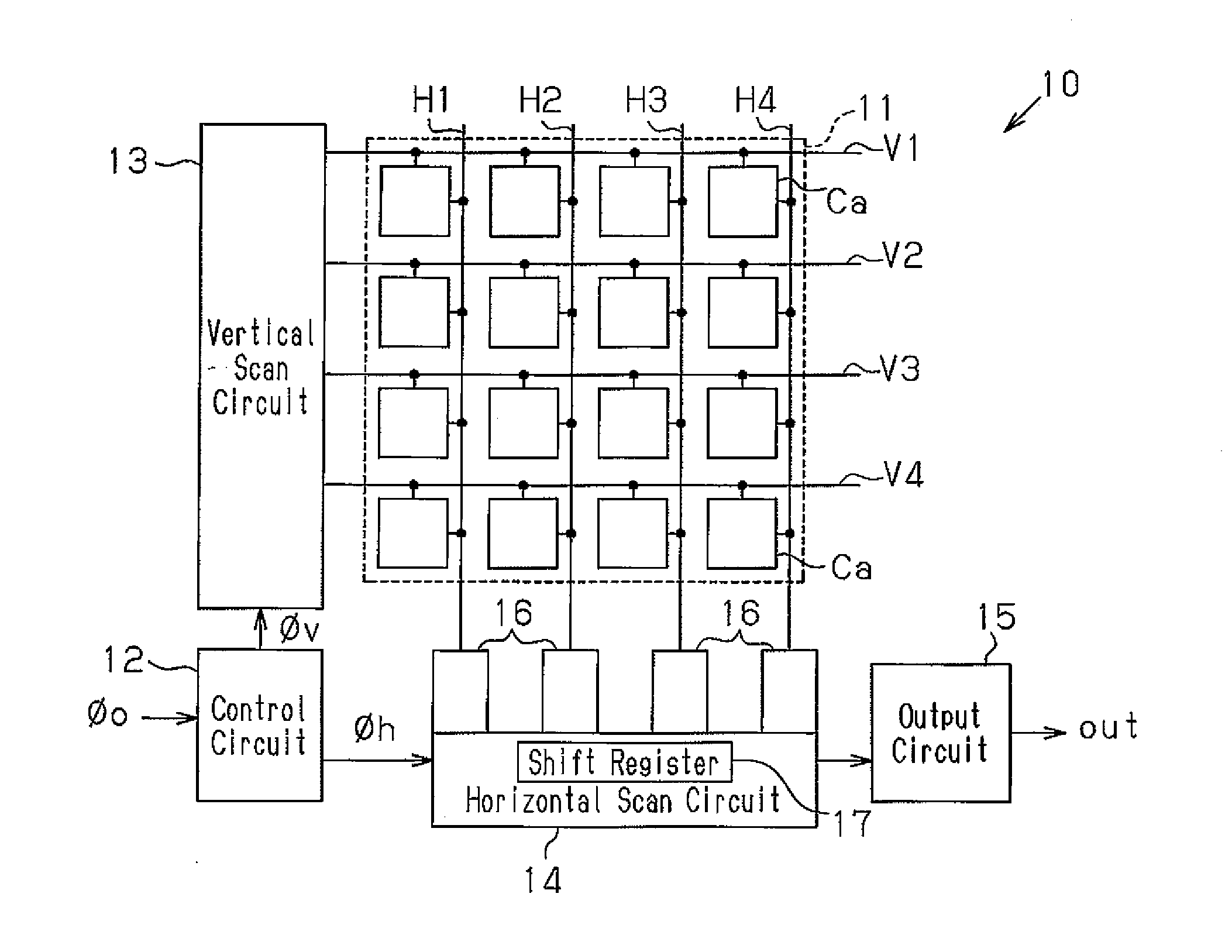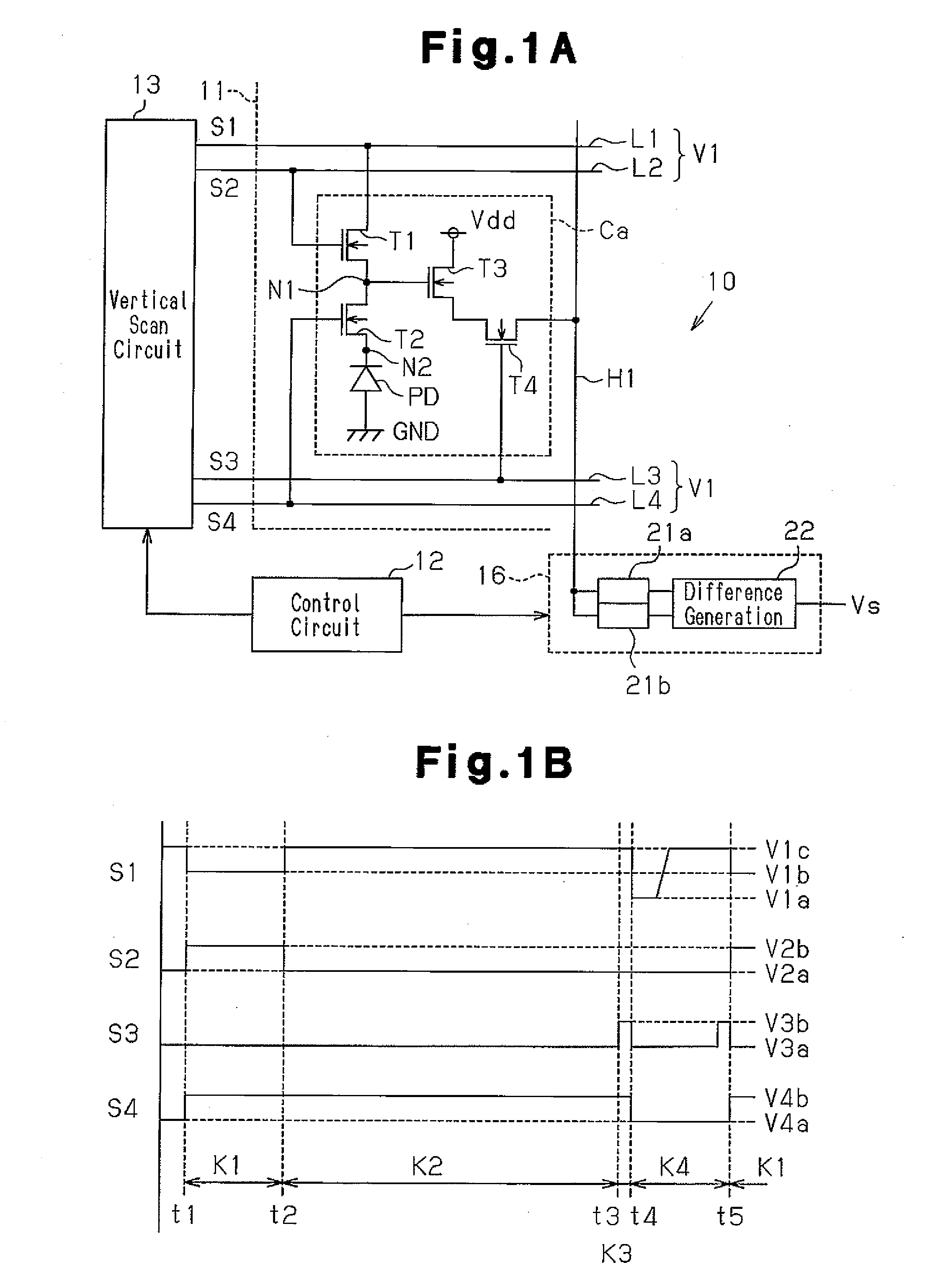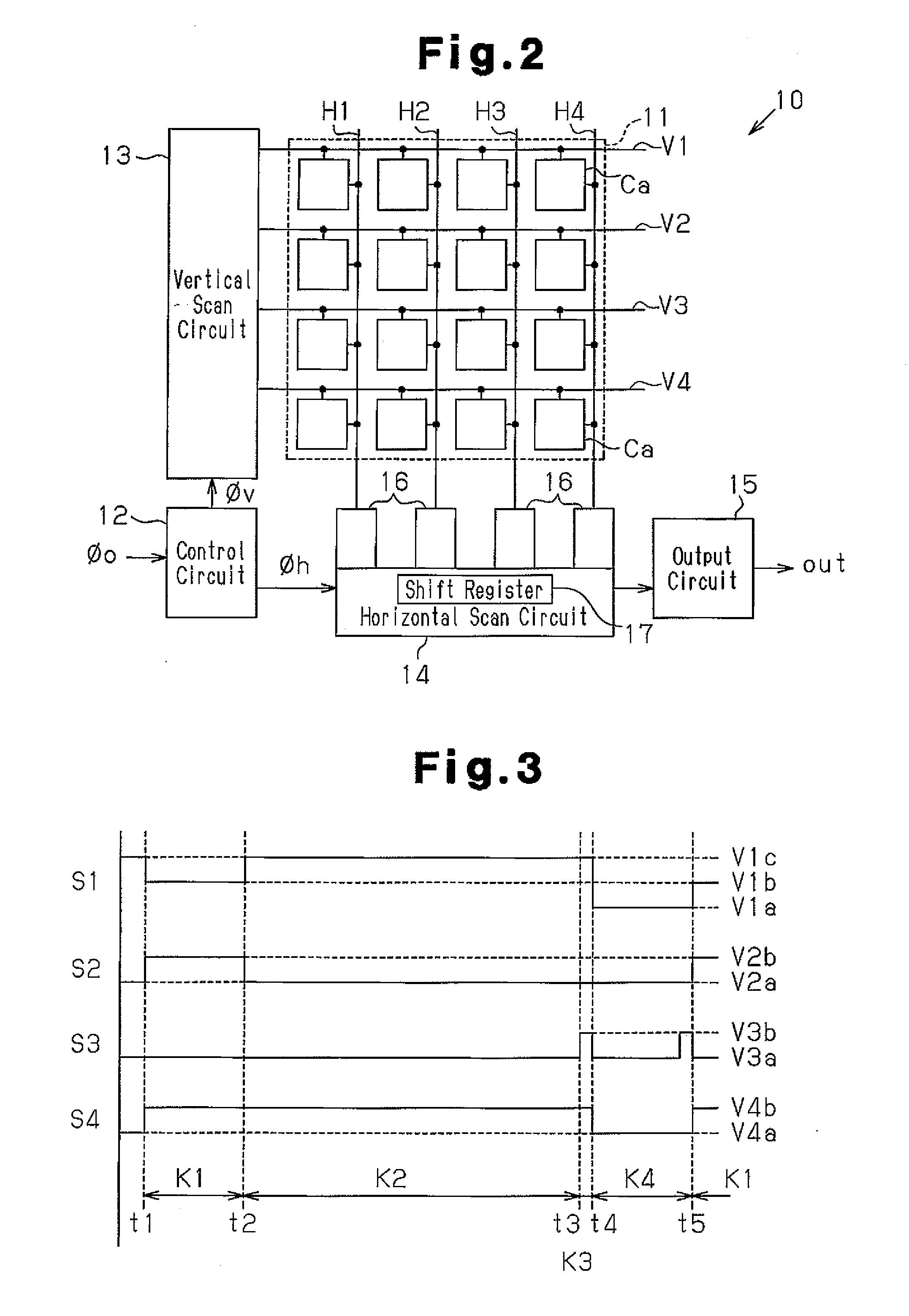Solid-state imaging device
a solid-state imaging and imaging device technology, applied in the field of solid-state imaging devices, can solve the problems of increasing the chip deficiency rate, reducing production efficiency, increasing the leak current, etc., and preventing the area of the image cell from increasing. , the effect of reducing the noise of fixed patterns
- Summary
- Abstract
- Description
- Claims
- Application Information
AI Technical Summary
Benefits of technology
Problems solved by technology
Method used
Image
Examples
first embodiment
[0030]A solid state imaging device 10 according to the present invention will now be discussed with reference to the drawings.
[0031]FIG. 2 is a schematic block circuit diagram of the solid state imaging device 10.
[0032]The solid state imaging device 10 includes an imaging unit 11, a control circuit 12, a vertical scan circuit 13, a horizontal scan circuit 14, and an output circuit 15.
[0033]The imaging unit 11 includes a plurality of pixels Ca arranged in a matrix. For the sake of brevity, the first embodiment will be discussed with the imaging unit 11 including 16 pixels Ca that are arranged in a matrix of four columns and four rows.
[0034]Based on a clock signal Φ0, the control circuit 12 generates a vertical clock signal Φv, which serves as a selection signal for selecting a row in the imaging unit 11, a horizontal clock signal Φh, which serves as a selection signal for selecting a column in the imaging unit 11, and a control signal for controlling and driving the pixels Ca and the...
second embodiment
[0067]the present invention will now be discussed with reference to the drawings.
[0068]The second embodiment differs from the first embodiment in drive waveform of a pixel so that the pixel ca is properly driven when generating a dark image.
[0069]The vertical scan circuit 13 shown in FIG. 1A varies the drive signals as shown in FIG. 3 in response to a control signal from the control circuit 12.
[0070]During a photoelectric conversion period K2 from time t2 to time t3, the vertical scan circuit 13 provides the drive signals S1 to S4 to the signal lines L1 to L4 in the same manner as in the first embodiment. The potential at the sense node N1 when a dark image is generated, or when the intensity of the incident light is low, is determined as described below.
[0071]When a dark image is generated, or when the intensity of the incident light is low, the photocurrent Ip flowing through the photodiode PD is small. Thus, the potential at the sense node N1 does not shift to the normal state du...
third embodiment
[0085]the present invention will now be discussed with reference to the drawings.
[0086]In the third embodiment, components that are the same as those in the first and second embodiment are denoted with the same reference numerals.
[0087]Referring to FIG. 4, the CDS circuit 16 of the third embodiment includes three SH circuits 31a, 31b, and 31c, two difference generation circuits 32a and 32b, an adder circuit 33, a comparison circuit 34, and a selection circuit 35.
[0088]The SH circuits 31a to 31c, which are connected to the column signal line H1, hold a signal of the column signal line H1. The signal held by the first SH circuit 31a is provided to the first differential generation circuit 32a. The signal held by the second SH circuit 31b is provided to the first difference generation circuit 32a and second difference generation circuit 32b. The signal held by the third SH circuit 31c is provided to the second differential generation circuit 32b.
[0089]The first difference generation c...
PUM
 Login to View More
Login to View More Abstract
Description
Claims
Application Information
 Login to View More
Login to View More - R&D
- Intellectual Property
- Life Sciences
- Materials
- Tech Scout
- Unparalleled Data Quality
- Higher Quality Content
- 60% Fewer Hallucinations
Browse by: Latest US Patents, China's latest patents, Technical Efficacy Thesaurus, Application Domain, Technology Topic, Popular Technical Reports.
© 2025 PatSnap. All rights reserved.Legal|Privacy policy|Modern Slavery Act Transparency Statement|Sitemap|About US| Contact US: help@patsnap.com



